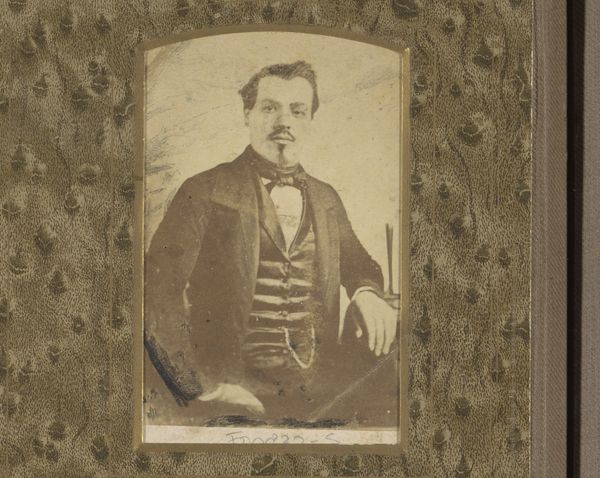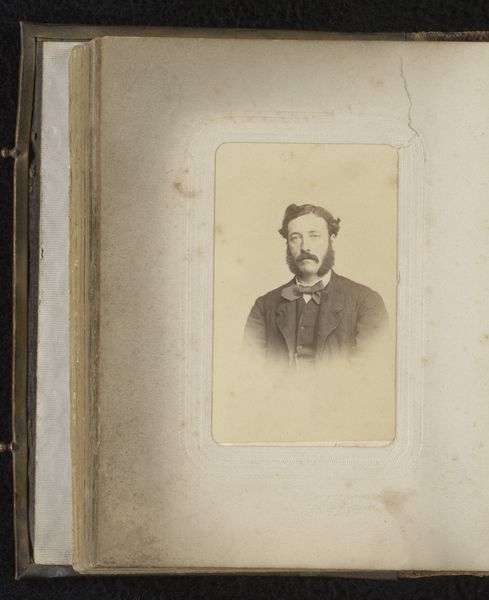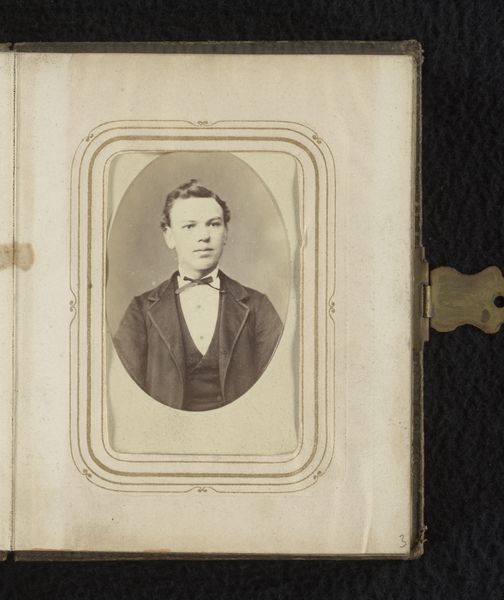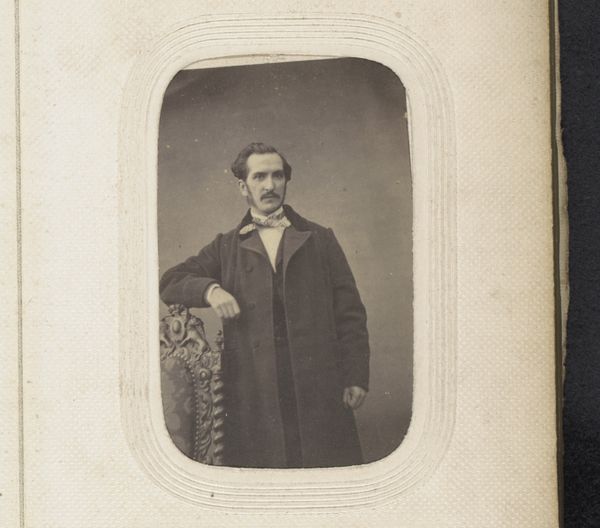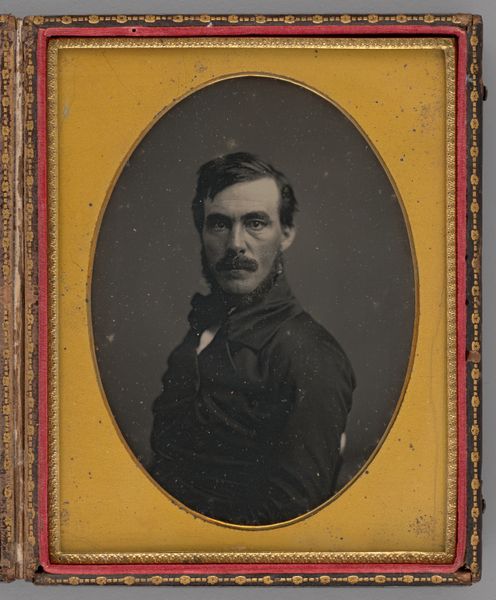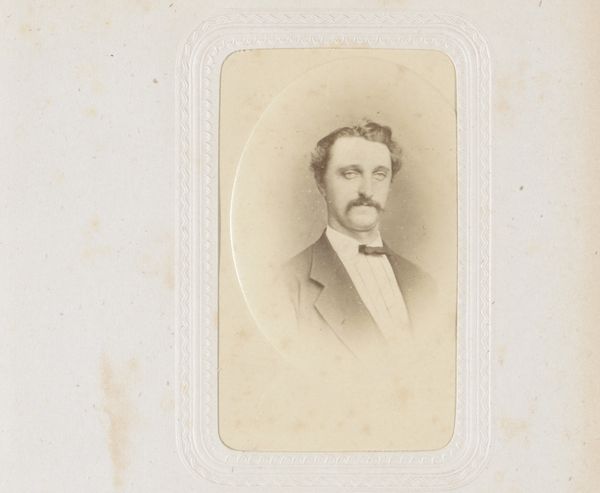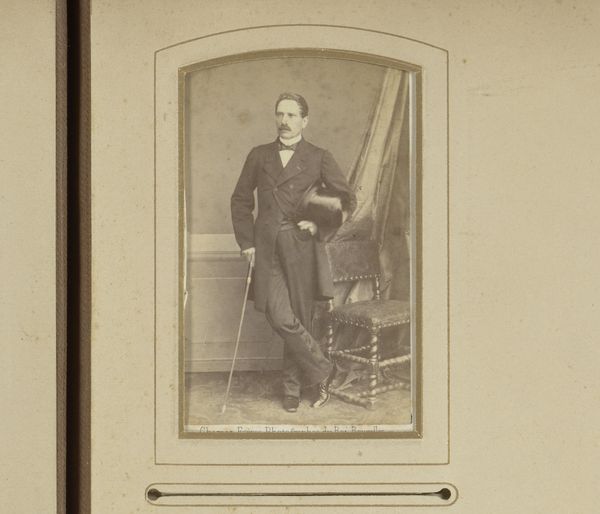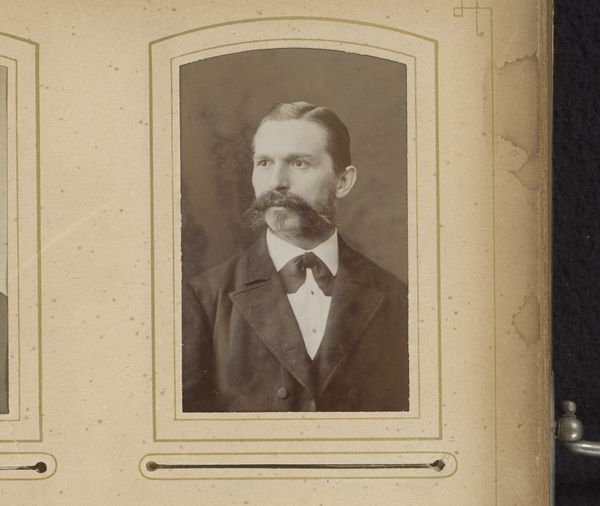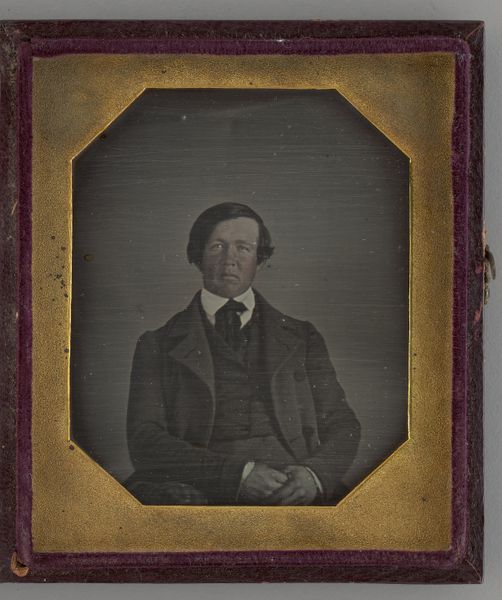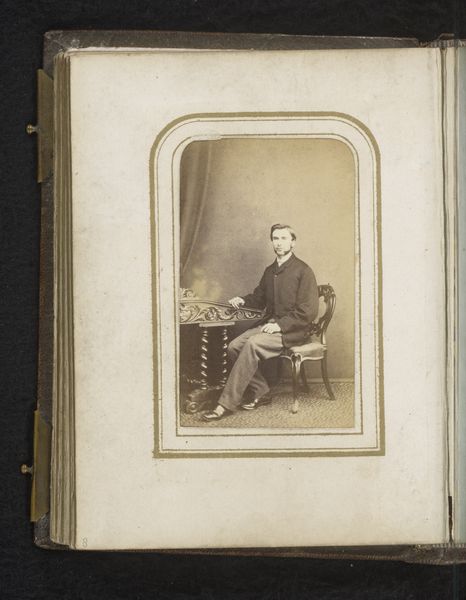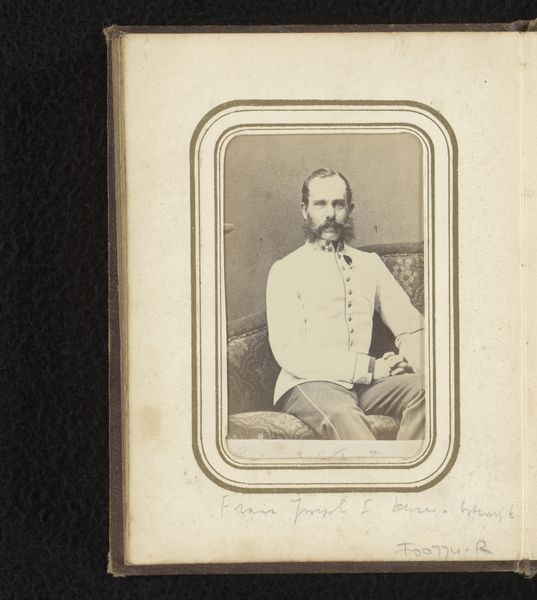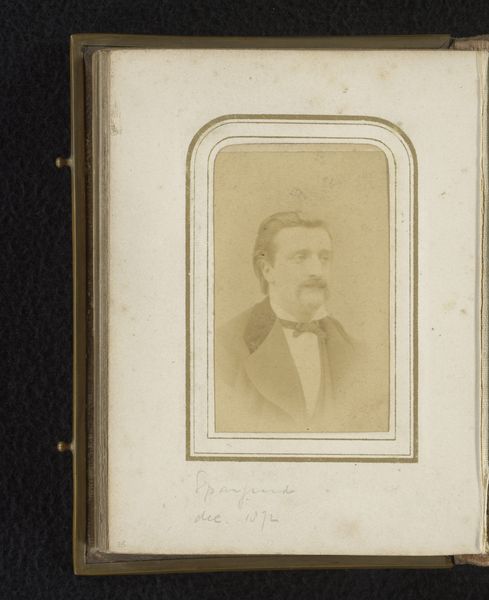
daguerreotype, photography
#
portrait
#
16_19th-century
#
daguerreotype
#
photography
#
united-states
#
realism
Dimensions: 7.8 × 6.8 cm (plate, appro×.); 6.3 × 5 cm (image, sight); 9.2 × 16.5 × .9 cm (open case); 9.3 × 8.5 × 1.8 cm (case)
Copyright: Public Domain
Curator: This daguerreotype, entitled “Untitled (Portrait of a Seated Man with Knife)," dates to 1863. Although the photographer remains unknown, the work offers a compelling glimpse into 19th-century America and now resides here at the Art Institute of Chicago. Editor: Oh, my goodness, the *drama* of it all. He's posed so stiffly, but with that slightly unsettling knife, and that teacup – it feels like a moment just before some momentous decision. Is he mining? Pondering a philosophical point over tea and potentially ending it all with that knife? What is *happening* here? Curator: Well, it's essential to consider the social context of photography in the 1860s. Photography was no longer a novelty but still a somewhat formal and carefully constructed process. This man's social position and aspirations are likely reflected in his posture and props. The knife and cup, though perhaps everyday objects, also hint at a broader narrative around masculinity, labor, and domesticity. Editor: Masculinity, absolutely. But also vulnerability, right? The contrast is so sharp. We’ve got this somewhat rough-hewn individual – I get a definite 'working man' vibe – juxtaposed with an object representing, like, civilized leisure? And yes, even though this daguerreotype looks as sharp as his knife, there's this almost melancholic air about him... Makes you wonder about the hardships he faced, if you ponder it for long enough... Curator: It invites us to consider the relationship between class identity and performance in photographic portraits. It’s probable that the subject chose these props to construct a very particular vision of himself and also of what kind of image would appeal to potential clients or partners. Moreover, the proliferation of photography contributed to the wider democratization of art as something available beyond only an elite stratum of society. Editor: Right! He’s essentially crafting his own PR. Looking back, the result is something really profound, especially because it is such a direct line through time... that daguerreotype *was* in fact in this room with him. Curator: Precisely. Looking at this work, one is not only peering at a likeness, but into the complex matrix of self-presentation, societal values, and the shifting cultural role of photographic images during this crucial era in American history. Editor: It gives me shivers, to be honest. What was going through that man's head the instant this was captured? The magic, the beauty, it truly transports you... to an other time.
Comments
No comments
Be the first to comment and join the conversation on the ultimate creative platform.
